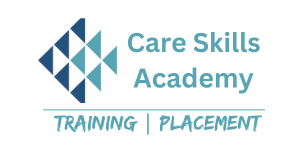Drones, or Unmanned Aerial Vehicles (UAVs), have revolutionized various industries, from photography and agriculture to logistics and emergency services. With their increasing popularity and use, the demand for skilled drone repair technicians has soared. Enrolling in a drone repairing course can open up a plethora of opportunities in this rapidly expanding field. In this blog, we will delve into the significance of drone repairing courses, what they entail, and the benefits they offer to aspiring technicians.
The Importance of Drone Repairing Skills
As drones become more integrated into everyday life and business operations, their maintenance and repair have become critical. Drones, like any other piece of sophisticated technology, are prone to malfunctions, wear and tear, and accidental damage. Skilled technicians are needed to ensure these devices remain operational and safe. A comprehensive understanding of drone repair not only ensures the longevity of these machines but also guarantees their optimal performance.
What to Expect from a Drone Repairing Course
A well-structured drone repairing course typically covers several key areas:
- Basic Electronics and Circuitry: Understanding the fundamentals of electronics is crucial. Courses often begin with the basics of electrical components, circuits, and how they function together within a drone.
- Drone Anatomy: A detailed study of the various parts of a drone, including the frame, motors, propellers, flight controllers, and GPS modules, helps technicians identify and understand each component’s role and potential issues.
- Troubleshooting Techniques: Learning systematic troubleshooting techniques enables technicians to diagnose problems accurately. This includes understanding common issues such as connectivity problems, motor failures, and sensor malfunctions.
- Software and Firmware: Drones rely heavily on software for their operation. Courses cover how to update and troubleshoot firmware issues, ensuring that the drone’s software is always up-to-date and functioning correctly.
- Repair and Replacement: Practical hands-on training is essential. Courses provide instruction on how to repair or replace damaged parts, including soldering techniques, part replacement, and calibration.
- Safety Protocols: Emphasis is placed on safety measures during repair and maintenance, including proper handling of batteries, which are a critical component of drone safety.
Benefits of Enrolling in a Drone Repairing Course
- Career Opportunities: With the drone industry booming, there is a high demand for skilled technicians. Completing a drone repairing course can lead to various career opportunities, including working for drone manufacturers, repair shops, or even starting your own repair business.
- Hands-On Experience: Courses often provide extensive hands-on training, allowing students to work on real drones and gain practical experience. This experience is invaluable and prepares students for real-world repair scenarios.
- Up-to-Date Knowledge: The drone industry is constantly evolving. A good course keeps students updated with the latest advancements in drone technology, ensuring they are well-prepared to handle new challenges and innovations.
- Networking Opportunities: Enrolling in a course provides opportunities to connect with industry professionals, instructors, and fellow students. These connections can be beneficial for future job opportunities and professional growth.
Conclusion
As drones continue to permeate various sectors, the need for qualified drone repair technicians will only grow. Enrolling in a drone repairing course equips you with the necessary skills and knowledge to thrive in this dynamic industry. Whether you are looking to start a new career, enhance your current skill set, or simply have a passion for technology, a drone repairing course can be your gateway to success. Embrace the opportunity to learn, innovate, and become an integral part of the UAV industry.

